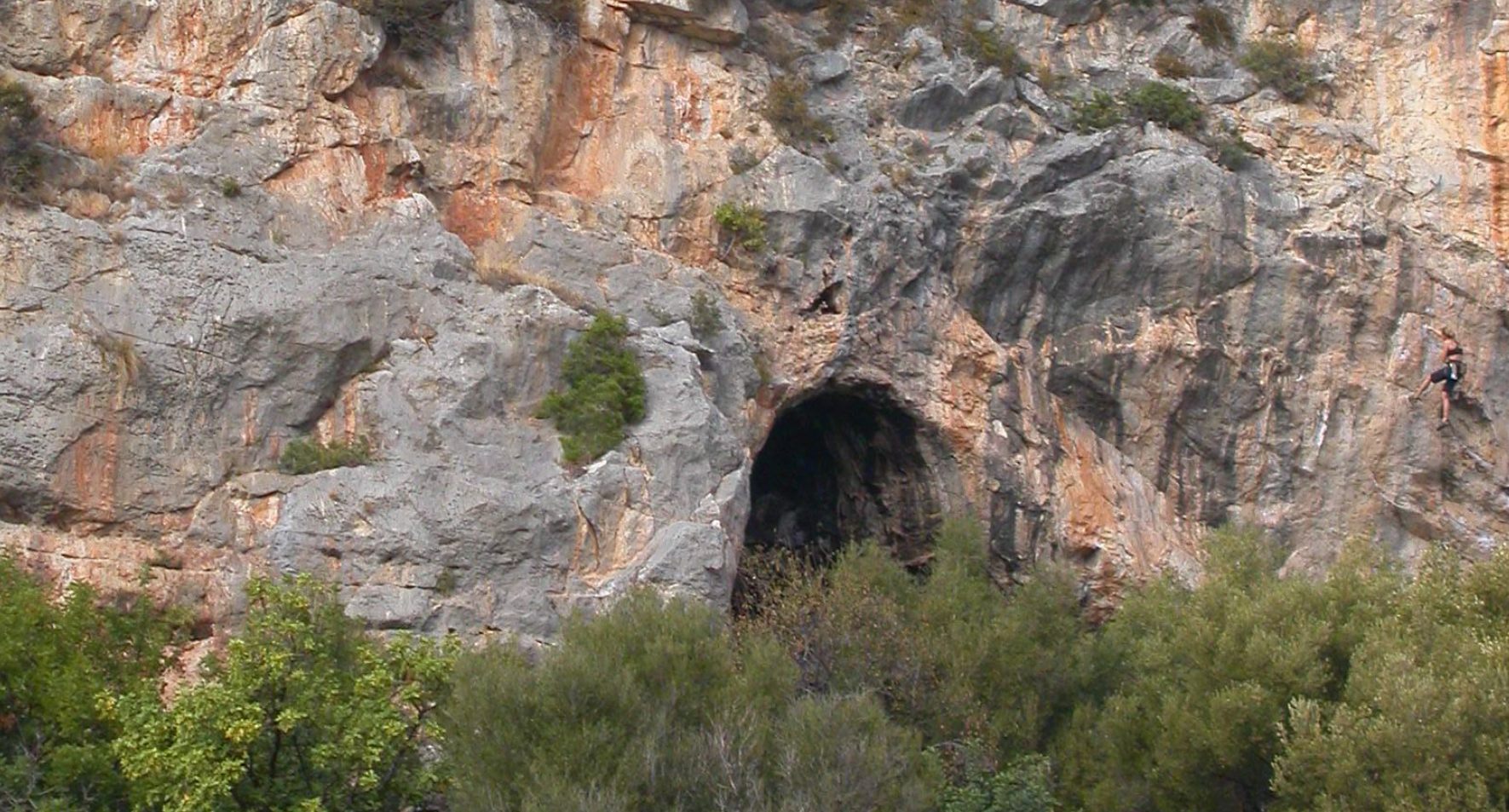Welcome to DU!
The truly grassroots left-of-center political community where regular people, not algorithms, drive the discussions and set the standards.
Join the community:
Create a free account
Support DU (and get rid of ads!):
Become a Star Member
Latest Breaking News
Editorials & Other Articles
General Discussion
The DU Lounge
All Forums
Issue Forums
Culture Forums
Alliance Forums
Region Forums
Support Forums
Help & Search
Anthropology
Related: About this forumNeanderthals glued their tools together
The 55,000- to 40,000-year-old stone tools still carry traces of resin adhesive.
KIONA N. SMITH - 7/2/2019, 10:05 AM

Neanderthals lived in Grotta di Sant'Agostino between 55,000 and 40,000 years ago.
Degano et al. 2019
Neanderthals glued their stone tools into place on wooden handles, a new study suggests. Archaeologists found chemical traces of pine resin on 10 stone tools from Grotta del Fossellone and Grotta di Sant’Agostino, on the western coast of central Italy. That’s pretty solid evidence that Neanderthals living in Italy were hafting their stone tools and securing them in place with resin between 55,000 and 40,000 years ago—long before Homo sapiens set foot in Europe.
Getting a grip on stone tools
For around three million years, hominins had been shaping various cutting, pounding, and scraping tools out of stone, but something was still missing. Imagine trying to skin and butcher a deer using a knife with no handle, and you’ve got life for most of hominin history. Hafting tools was a major improvement.
Typically, hafting a stone tool involves fitting it into a notch or slot in a wooden handle; the tool-maker might then lash it into place with tightly wrapped sinews or plant fibers. But people also use tree resin or pitch as a glue to help hold the tool in place.
“Once softened, the resin is pliable and can be pushed into position in the haft and around the stone tool with a pointed stick,” wrote University of Pisa chemist Ilaria Degano and her colleagues. “The resin then sets again and hardens as it cools down, keeping the stone in place.” That’s how modern hunter-gatherers do it, and archaeological evidence suggests that humans—and Neanderthals—have been doing it for at least 200,000 years. In a previous study, a team of archaeologists identified the chemical signature of birch bark pitch on two stone flakes from a site in central Italy that had the bones of a young elephant nearby.
More:
https://arstechnica.com/science/2019/07/neanderthals-glued-their-tools-together/
InfoView thread info, including edit history
TrashPut this thread in your Trash Can (My DU » Trash Can)
BookmarkAdd this thread to your Bookmarks (My DU » Bookmarks)
8 replies, 1988 views
ShareGet links to this post and/or share on social media
AlertAlert this post for a rule violation
PowersThere are no powers you can use on this post
EditCannot edit other people's posts
ReplyReply to this post
EditCannot edit other people's posts
Rec (9)
ReplyReply to this post
8 replies
 = new reply since forum marked as read
Highlight:
NoneDon't highlight anything
5 newestHighlight 5 most recent replies
= new reply since forum marked as read
Highlight:
NoneDon't highlight anything
5 newestHighlight 5 most recent replies
Neanderthals glued their tools together (Original Post)
Judi Lynn
Jul 2019
OP
How did they ever use them, if they were all stuck together? Sounds self-defeating! n/t
Judi Lynn
Jul 2019
#4
underpants
(186,644 posts)1. I bought a drill today
Judi Lynn
(162,384 posts)5. Happy drill day! n/t
Arkansas Granny
(31,827 posts)2. Prehistoric Gorilla glue.
Sneederbunk
(15,106 posts)3. That must have been both painful and awkward.
Judi Lynn
(162,384 posts)4. How did they ever use them, if they were all stuck together? Sounds self-defeating! n/t
dameatball
(7,603 posts)6. interesting. Thanks for posting.
Sunlei
(22,651 posts)7. those flint flakes are very sharp like a razor, makes sense to fit them into a handle.
resharpen the edge a couple times and then soften the pitch/glue & replace with a new 'blade'. I think the glue was just to keep the cutting stone 'blade' from falling out.
HeartlandProgressive
(294 posts)8. early humans were as creative. as we are
we can just transmit technology and knowledge better across distance and generations.